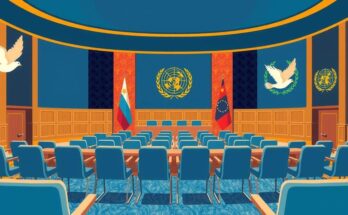In a chilling report, Amnesty International highlights that the Iranian government accounted for 74% of all documented executions globally in 2023, targeting political dissenters among others. The case of Reza Rasaei, executed after his arrest during the November 2022 protests, illustrates the regime’s exploitation of capital punishment as a means of oppression. Such occurrences expose the regime’s systemic brutality against its own people.
The Independent International Fact-Finding Mission on the Islamic Republic of Iran, in its March 2024 report, condemned the surge in executions that follow quick, unjust trials filled with human rights abuses. It categorizes these acts as crimes against humanity, encompassing severe violations like murder and torture—adding to the oppressive atmosphere surrounding any form of dissent.
Moving into 2024, Iran recorded at least 997 executions, likely an underestimate due to secret killings. October marked the peak month with 170 executions, while February only saw eight. Executions were distributed unevenly, with 941 men and 34 women executed in prison, signaling a grim trend that represents the highest number of executions in over 30 years.
The timing of executions often coincides with significant political turmoil—leading to an alarming 47% occurring in the final quarter alone. Under President Masoud Pezeshkian, who defended the bloodshed with, “Those who talk about human rights ask why we execute murderers,” the regime continued its harsh stance against perceived threats, exacerbating the violence.
Noteworthy geographical aspects include execution events happening in 86 different prisons across Iran’s provinces, with eight facilities housing half of all executions. The most notorious was Qezel Hesar Prison, where 165 lives were cut short. Disproportionate execution rates among marginalized groups, such as the Baluch, shed light on deep-seated systemic inequality within the regime’s lethal practices.
The demographic analysis of executed individuals reveals that 502 prisoners, over half, were condemned on drug-related offenses, despite regime allegations of being complicit in drug trafficking. The statistics further involve 9 juvenile offenders and 34 women among the executed, highlighting grave human rights violations occurring under the oppressive regime.
Beyond executions, Iran’s regime employed torturous methods with 28 cases of physical torture reported this year. Furthermore, inhumane punishments like whippings and amputations have surfaced, demonstrating the regime’s harsh treatment of dissent. In a disturbing incident, a protester was sentenced to blinding, symbolizing the extreme measures against those who challenge the authority.
In 2024 alone, the regime executed at least 15,139 arbitrary arrests, marking significant political repression. Of these, over 3,000 were political arrests, while thousands were randomly detained, reflecting a climate of fear discouraging open dissent against the government. Meanwhile, extrajudicial killings remain prevalent, particularly against marginalized laborers, intensifying the horror of human rights abuses.
Ultimately, the volume of executions and widespread human rights violations underscore Iran’s reliance on state-sanctioned violence to quash dissent and exert fear over its citizens. The international community must actively demand accountability and justice for those suffering at the hands of an oppressive regime.
Amnesty International reports that Iran was responsible for 74% of global executions in 2023, with at least 997 executions recorded in 2024—a 16% increase from the previous year. These statistics reflect systemic oppression, arbitrary arrests, and torture under an increasingly brutal regime. Significant political events correlate with spikes in executions, demonstrating the government’s reliance on violence to suppress dissent.
The Iranian regime’s alarming frequency of executions and brutal human rights violations paints a stark picture of a government that systematically represses any form of dissent. With the past year showcasing the highest rate of executions in decades, urgent action from the international community is needed to hold the regime accountable for its crimes and seek justice for its victims.
The article focuses on the alarming increase in executions and human rights abuses by the Iranian regime in 2023-2024. It highlights reports from Amnesty International and the Independent International Fact-Finding Mission, detailing systemic executions, arbitrary arrests, and torture practices. The article serves as a call for international accountability in light of the regime’s continued brutality against its citizens, particularly political dissenters.
Original Source: irannewsupdate.com



